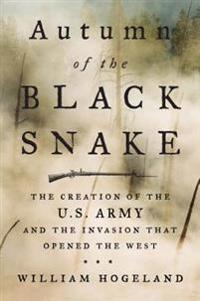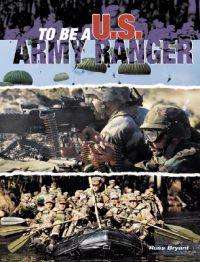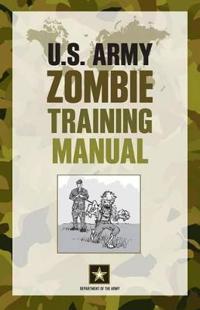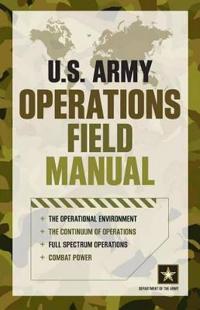Increasing Airpower's Effectiveness: Applying the U.S. Army's Operational Design Methodology to Airpower in Warfare
ISBN: 9781288257379 - UTGIVEN: 2012-11The Night Stalkers: Top Secret Missions of the U.S. Army's Special Operations Aviation Regiment (Häftad)
avMichael J. Durant, Steven Hartov
ISBN: 9780451222916 - UTGIVEN: 2008-01The co-authors of In the Company of Heroes share stories from the army's elite aviation unit, describing the harrowing adventures of some of the world's top professional helicopter crews during their missions in Iran, Granada, Iraq, and other locations. Reprint.[...]
No Excuse Leadership: Lessons from the U.S. Army's Elite Rangers (Inbunden)
avBrace E. Barber
ISBN: 9780471488033 - UTGIVEN: 2004-01-31Portrait of War: The U.S. Army's First Combat Artists and the Doughboys' Ex (Inbunden)
avPeter Krass
ISBN: 9780471670230 - UTGIVEN: 2006-10-31The Night Stalkers: Top Secret Missions of the U.S. Army's Special Operations (CD-bok)
ISBN: 9781400133482 - UTGIVEN: 2007-01From the authors of the bestselling In the Company of Heroes come the thrilling, never-before-heard stories of the Army's elite aviation unit, the most daring and professional helicopter crews in the world.In his first book, Michael Durant told his harrowing tale of being shot down in his Blackhawk [...]
The Apache Wars: The History and Legacy of the U.S. Army's Campaigns Against the Apaches (häftad)
ISBN: 9781511871662 - UTGIVEN: 2015-04The Boys of Pointe Du Hoc: Ronald Reagan, D-Day, and the U.S. Army 2nd Ranger Battalion (Häftad)
avDouglas G. Brinkley
ISBN: 9780060565305 - UTGIVEN: 200605Draws on recently released documents from the Reagan Library archive to provide an in-depth account of the D-Day activities of the elite U.S. Army 2nd Rangers, recounting how they defended themselves for two days against Nazi counterattacks, in a volume that then describes President Reagan's fortiet[...]
Sons and Soldiers: The Untold Story of the Jews Who Escaped the Nazis and Returned with the U.S. Army to Fight Hitler
ISBN: 9780062419095 - UTGIVEN: 2017-07Joining the ranks of Unbroken, Band of Brothers, and Boys in the Boat, the little-known saga of young German Jews, dubbed The Ritchie Boys, who fled Nazi Germany in the 1930s, came of age in America, and returned to Europe at enormous personal risk as members of the U.S. Army to play a key role in t[...]
Sons and Soldiers: The Untold Story of the Jews Who Escaped the Nazis and Returned with the U.S. Army to Fight Hitler (häftad)
ISBN: 9780062419101 - UTGIVEN: 2018-07NEW YORK TIMES BESTSELLER - "An irresistible history of the WWII Jewish refugees who returned to Europe to fight the Nazis." --NewsdayThey were young Jewish boys who escaped from Nazi-occupied Europe and resettled in America. After the United States entered the war, they returned to fight for their [...]
Corps of Engineers Water Resources Infrastructure (Häftad)
avEngineer Committee on U.S. Army Corps of Engineers Water Resources Science, Water Science and Technology Board, Division on Earth and Life Studies
ISBN: 9780309264761 - UTGIVEN: 2013-09Over the past century, the U.S. Army Corps of Engineers has built a vast network of water management infrastructure that includes approximately 700 dams, 14,000 miles of levees, 12,000 miles of river navigation channels and control structures, harbors and ports, and other facilities. Historically, t[...]
Autumn of the Black Snake: The Creation of the U.S. Army and the Invasion That Opened the West
ISBN: 9780374107345 - UTGIVEN: 2017-05The forgotten story of how the U.S. Army was created to fight a crucial Indian warIn 1783, with the signing of the Peace of Paris, the American Revolution was complete. And yet even as the newly independent United States secured peace with Great Britain, it found itself losing an escalating military[...]
The Social Politics of Research Collaboration (Inbunden)
avEngineer Committee on U.S. Army Corps of Engineers Water Resources Science, Water Science and Technology Board, Division on Earth and Life Studies
ISBN: 9780415857017 - UTGIVEN: 2013-07The past two decades have seen an increasing emphasis on large and interdisciplinary research configurations such as research networks, and centers of excellence including those in Social Sciences and Humanities research. Little research has been undertaken, however, to understand how these new larg[...]
PSYOP - Military Psychological Operations Manual (Häftad)
avU.S. Army
ISBN: 9780557052561 - UTGIVEN: 2009-03Written as a Top Secret US Army procedural manual and released under the Freedom of Information act this manual describes the step-by-step process recommended to control and contain the minds of the enemy and the general public alike. Within these 180+ pages you will read in complete detailed the Mi[...]
Citizen Soldiers: The U.S. Army from the Normandy Beaches to the Bulge to the Surrender of Germany, June 7, 1944-May 7, 1945 (Häftad)
avStephen E. Ambrose, Stephen E. Ambrose
ISBN: 9780684848013 - UTGIVEN: 199809In this riveting account, historian Stephen Ambrose continues where he left off in his #1 bestseller D-Day. Ambrose again follows the individual characters of this noble, brutal, and tragic war, from the high command down to the ordinary soldier, drawing on hundreds of interviews to re-create the wa[...]
To Be a U. S. Army Ranger (Pocket)
avRuss Bryant
ISBN: 9780760313145 - UTGIVEN: 2003-04Experience the transformation of raw recruits as Iowa farm boys and ghetto hardened L.A. gangsters are molded into one of the U.S. Army's most effective fighting units. Enter their lives before boot camp and travel with them through the rigorous Ranger training at Fort Benning, Georgia. To be a U.S.[...]
To Be A U.S. Army Green Beret (Pocket)
avGerald Schumacher
ISBN: 9780760321072 - UTGIVEN: 200507The latest book in the popular series The Green Berets' motto is "Liberate the Oppressed," and it takes extremely capable and highly trained individuals to carry out their operations in the world's most dangerous and unforgiving locales. They operate behind enemy lines, sometimes for months at a tim[...]
U.S. Army Zombie Training Manual
ISBN: 9780762781478 - UTGIVEN: 2012-10When a zombie is taken prisoner by the Army, it need not be uselessly destroyed. In fact, just as our Army trains dogs for combat roles, it has a program to train the captured Undead for combat roles. No zombie that our Army can capture will go unutilized. This is our Army's "No Zombie Left Behind" [...]
U.S. Army Operations Field Manual
ISBN: 9780762781973 - UTGIVEN: 2013-01The U.S. Army believes our nation's future is one of "persistent conflict"- protracted confrontation among state, nonstate, and individual actors willing to use violence to achieve their political and ideological ends. Operations, required reading for Army leadership, provides the intellectual core [...]
Uniforms and Equipment of U.S. Army Infantry, Lrrps and Rangers in Vietnam 1965-1971 (Inbunden)
avPaul W. Miraldi
ISBN: 9780764309588 - UTGIVEN: 1999-10This new, extensively researched volume is a comprehensive guide to the history, development, wear, and use of uniforms and equipment during America's involvement in the Vietnam War. Included are insignia, headgear, camouflage uniforms, experimental items, modified items, flak armor, boots, clothing[...]
U.S.Army Headgear 1812-1872
ISBN: 9780764316722 - UTGIVEN: 2004-09"John Langellier and C. Paul Loane have collaborated to produce a resource that not only builds upon the information provided by their predecessors, but also contributes fresh material to the body of existing knowledge. These two highly respected and long-time students of American military history h[...]
Political Indoctrination in the U.S. Army from World War II to the Vietnam War
ISBN: 9780803224865 - UTGIVEN: 2009-04After drilling troops during the American Revolution, Baron Friedrich von Steuben reportedly noted that although one could tell a Prussian what to do and expect him to do it, one had to tell an American why he ought to do something before he would comply. Although such individualistic thinking is pa[...]
Forging the Sword: Doctrinal Change in the U.S. Army (häftad)
ISBN: 9780804797375 - UTGIVEN: 2016-02As entrenched bureaucracies, military organizations might reasonably be expected to be especially resistant to reform and favor only limited, incremental adjustments. Yet, since 1945, the U.S. Army has rewritten its capstone doctrine manual, "Operations," fourteen times. While some modifications hav[...]
Uniforms, Arms, and Equipment Volume 1: The U.S. Army on the Western Frontier, 1880-1892
ISBN: 9780806137896 - UTGIVEN: 2007-05Building on the success of his best-selling The U.S. Army in the West, 1870-1880: Uniforms, Arms, and Equipment, Douglas C. McChristian here presents a two-volume comprehensive account of the evolution of military arms and equipment during the years 1880-1892. The volumes are set against the backdro[...]
Washita: The U.S. Army and the Southern Cheyennes, 1867-1869 (häftad)
ISBN: 9780806138855 - UTGIVEN: 2008-03On November 27, 1868, the U.S. Seventh Cavalry under Lt. Col. George Armstrong Custer attacked a Southern Cheyenne village along the Washita River in present-day western Oklahoma. The subsequent U.S. victory signaled the end of the Cheyennes' traditional way of life and resulted in the death of Blac[...]



























